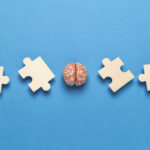The Impact of Cognitive Biases on Decision Making: Types, Examples, and Mitigation Strategies
Decision-making is a fundamental aspect of both personal and professional life. While we often believe our decisions are rational and objective, the human brain is susceptible to systematic errors in thinking known as cognitive biases. These biases, also referred to as dangerous judgment errors, influence how we process and interpret information, significantly impacting our judgments and choices. Understanding these mental shortcuts is crucial for improving critical thinking and avoiding costly mistakes.
What Are Cognitive Biases?
A cognitive bias is a systematic pattern of deviation from norm or rationality in judgment. Essentially, they are mental shortcuts or rules of thumb (heuristics) that the brain uses to simplify information processing and enable quick decisions. While often helpful for speed, these shortcuts can sometimes lead to inaccurate assessments and poor outcomes.
The study of cognitive biases and heuristics was significantly stimulated by the pioneering work of Daniel Kahneman and Amos Tversky, starting in the early 1970s. Kahneman, a Nobel laureate in economics, and Tversky laid the foundations for what is now known as the “biases and heuristics” tradition in psychology.
Why Do Cognitive Biases Occur?
Cognitive biases are often a result of the brain’s attempt to manage the overwhelming amount of information it receives. They help us make sense of the world and reach decisions relatively quickly. However, many of these biases are considered inevitable because we simply lack the time to thoroughly evaluate every thought and decision for potential bias. Despite their prevalence, understanding these biases is highly beneficial in learning how they can steer us towards poor decisions.
Key Cognitive Biases and Their Impact
The sources highlight several common cognitive biases that affect judgment in various contexts, from everyday life to professional settings.
Availability Heuristic
The Availability Heuristic is a mental shortcut where people base judgments and predictions on how easily examples come to mind. If something is readily available in memory, perhaps due to recent news reports or vivid examples, we tend to overestimate its frequency or likelihood.
- For instance, after reading an article about lottery winners, you might overestimate your chances of winning and spend more money on tickets.
- Seeing news reports about job losses can lead you to believe you’re in imminent danger of being laid off, causing excessive worry.
- Exposure to television programs on shark attacks might lead you to believe these incidents are common, making you refuse to swim in the ocean on vacation.
The Availability Heuristic can be a helpful tool, but it’s important to remember that ease of recall doesn’t necessarily reflect actual probability or commonality. It can sometimes lead to incorrect assessments. This bias is cited as significantly impacting decision-making in everyday life and can influence professionals as well.
Confirmation Bias
Confirmation Bias is the tendency to seek out, interpret, favor, and recall information in a way that confirms one’s pre-existing beliefs or hypotheses. This involves “cherry-picking” facts that support an existing belief.
If you already believe something, you are more likely to notice and remember evidence that supports it while ignoring or downplaying evidence that contradicts it. This bias significantly impacts decision-making in everyday life and has been studied for its influence on professionals, such as judges.
Fundamental Attribution Error
The Fundamental Attribution Error, also known as correspondence bias or over-attribution effect, describes the tendency to over-emphasize personality-based explanations for the behaviors of others while under-emphasizing situational explanations. In other words, when we see someone act, we are more likely to attribute their behavior to their character or disposition rather than considering external factors or circumstances that might have influenced them.
Anchoring Bias
The Anchoring Bias, or anchoring effect, occurs when an initial piece of information, the “anchor,” disproportionately influences subsequent judgments or decisions. This first figure tends to strongly influence the final outcome in negotiations centered on price or another figure. Even if the initial anchor is arbitrary or extreme, it can pull the subsequent discussion and final outcome in its direction.
- In salary negotiations, the wage or range mentioned by the employer in the job listing can act as an anchor, often putting the candidate at a disadvantage.
- Making the first offer in a negotiation, particularly a precise one, can be a smart move because it anchors the discussion.
- Retailers frequently take advantage of the anchoring bias when setting prices, making seemingly “great deals” appear more attractive by showing a higher original price.
The anchoring bias is recognized as significantly impacting decision-making and plays a crucial role in negotiation strategies.
Overconfidence Bias
Overconfidence is a recurrent cognitive bias that manifests in various ways, including overprecision, overestimation, and overplacement. It involves having an unwarranted certainty in one’s judgments or abilities.
One study found that senior finance executives were severely miscalibrated in their stock market predictions, providing confidence intervals that were far too narrow, demonstrating overprecision. Overconfidence is noted as the most recurrent cognitive bias impacting professionals in fields such as management, finance, medicine, and law.
Sunk Cost Fallacy
The Sunk Cost Fallacy describes the tendency to continue investing time, money, or effort into something because of past investments, even when it’s not the most rational decision moving forward. The idea is that the resources already spent (the “sunk costs”) are gone and cannot be recovered, so they shouldn’t influence future decisions. However, bias leads us to continue, hoping to justify the initial investment.
An example is continuing a project because significant money has already been invested, even if the project is failing. This bias impacts decision-making in everyday life.
Other Biases
Sources also mention other cognitive biases, including the Framing Effect and Loss Aversion. Loss aversion, identified by Kahneman and Tversky, highlights that individuals often feel the pain of a loss more strongly than the pleasure of an equivalent gain. Other mentioned biases include calibration bias, actor-observer bias, attractiveness bias, optimism bias, functional fixedness, false consensus effect, attention biases, misinformation effect, duration neglect, peak-end rule, and focusing illusion.
The Impact of Cognitive Biases on Professionals and Business
Cognitive biases are not confined to personal decisions; they routinely lead to serious and costly mistakes in business and professional settings. They significantly impact decision-making in areas like management, finance, medicine, and law.
- In management, biases affect strategic decisions, which are often ambiguous, complex, and uncertain. CEO overconfidence, for example, has been the subject of significant empirical research.
- Research shows that biases impact professionals in finance, medicine, and law as well. Overconfidence is particularly prevalent across these fields.
- Experts in marketing and political campaigns actively study and exploit these biases to influence people’s thoughts and actions, often to further their own interests rather than the public’s.
Humans, more than the purely rational “Econs” of classical economics, need protection from others who deliberately exploit their cognitive weaknesses.
Strategies for Mitigating Cognitive Biases
Fortunately, research shows that pragmatic strategies can be used to address these dangerous judgment errors. Addressing biases requires effort, similar to improving physical fitness.
Key strategies include:
- Learn the Principles: Understand the biases to see reality more clearly.
- Predict Biases: Anticipate when you or others might be susceptible to biases and prevent them from occurring.
- Recognize Biases: Immediately identify when judgment errors are undermining a situation, even if not predicted beforehand.
- Take Action in the Moment: Even without time for structured techniques, take steps to protect yourself or others.
- Teach Others: Educate others on how to protect themselves from mental blindspots.
- Use Structured Decision-Making: Employ techniques tailored to the importance and complexity of the decision – brief for small decisions, longer for moderately important ones, and in-depth for major or complex ones.
- Get an External Perspective: Consulting others is usually more effective than relying solely on self-reflection. This can be done by:
- Using aggregators of opinions (like Glassdoor for job decisions).
- Speaking to trusted individuals who understand your quirks and potential mistakes.
- Consulting experts on the specific topic at hand.
- Incorporate Other Tools: When the availability heuristic might mislead, integrate other tools and strategies into your decision-making process for more accurate choices.
- Make a Plan: To address dangerous judgment errors in your professional life and within your team or organization, create a specific plan.
- Debiasing Training: Some research suggests that debiasing training can improve decision-making in real-world settings.
While becoming aware of biases is a crucial first step, awareness alone may not always be enough to change behavior effectively. Debiasing can be challenging, and even experts like Kahneman admit difficulty countering some effects personally. Policies and institutions may also play a role in helping humans make better judgments and decisions, and offering protection from exploitation.
The Foundational Research
Much of the understanding of cognitive biases stems from decades of research, notably the work of Daniel Kahneman and Amos Tversky. Their collaboration laid the groundwork for the study of how people make judgments under uncertainty, deviating from purely rational models. Kahneman’s book, “Thinking, Fast and Slow,” widely lauded, summarizes this extensive research. Their work has had a profound impact, reshaping fields from social psychology to behavioral economics.
Conclusion
Cognitive biases are inherent systematic errors in human thinking that powerfully influence our decisions and judgments across all aspects of life, including critical professional domains. From overestimating probabilities based on vivid memories (Availability Heuristic), to seeking out information that confirms existing beliefs (Confirmation Bias), to being overly influenced by initial figures (Anchoring Bias), these mental shortcuts can lead to significant errors. While some biases may be unavoidable, recognizing their existence and implementing pragmatic strategies, such as using structured decision-making, seeking external perspectives, and continuous learning, can significantly help in mitigating their negative impact and improving the quality of our decisions. Understanding the nature of these biases, informed by foundational research, is the first step towards more rational and effective decision-making.





